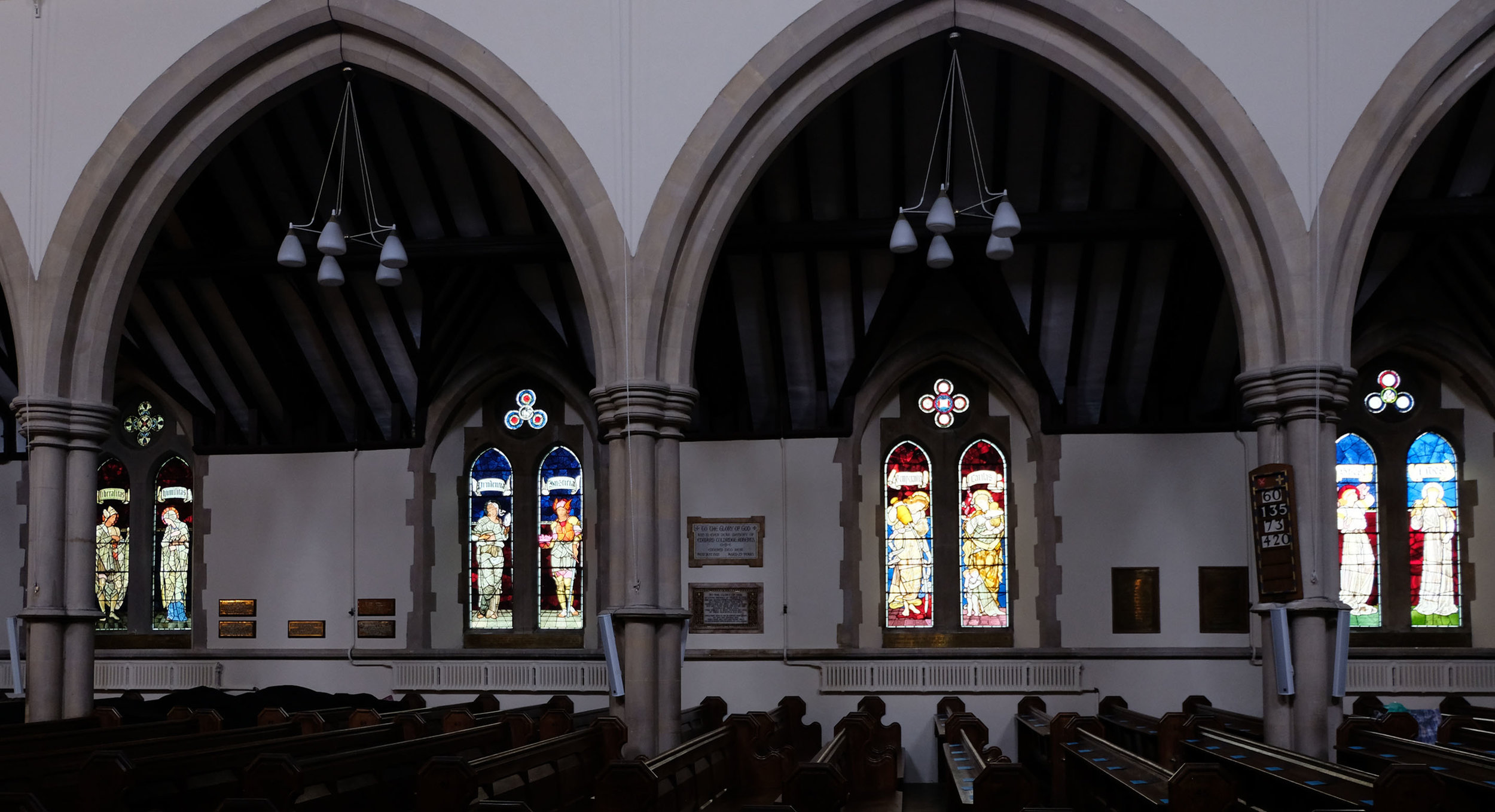People are always telling me that their favourite church windows are the simple leaded lights in pale coloured glass that allow you to see the world outside. In St Mary, Warwick, most of the aisle windows are of this type (above) showing off some great shapes in the tracery. However there is one window in the regimental chapel that is filled with light fresh colours in the upper part and delicate local details in the lower (below) where rows of soldiers march across the panes. As a lover of skilled glass painting, I always look out for a good bit of detail, then get drawn into an appreciation of the whole window in terms of colour and composition, and after that I think about the subject matter and what it means.
Regimental chapel windows, St Mary, Warwick by Philip Chatwin 1952.
The main visit of the day was to the beautiful church at Middleton Cheney, Northamptonshire, which has a superb collection of windows by Morris & Co from different periods and with panels by most of the artists associated with the firm. By all accounts the best is the west window (below), although it’s difficult to get close enough and to see past a huge sign partly covering the bottom of the three princes in the fiery furnace. The fiery flames around the Burne-Jones figures are what drew me in here, then I appreciated the overall glow of the predominantly brown painting (so difficult to persuade clients they want a brown window but so good to see!) and only then did I think about the subject matter.
West window, All Saints, Middleton Cheney, Edward Burne-Jones 1870.
In fact the best subject matter was only revealed by the camera’s zoom lens, where I saw that the shadowy angels are sharp and delicate figures holding globes showing the first days of the creation, a classic Burne-Jones device. The backgrounds to the figures, which are painted on large pieces of glass in brown iron oxide and silver stain, are not clear but covered in a scaley pattern that modulates the incoming light.
Row of creation windows from the centre of the west window, Middleton Cheney.
The east window (below) includes details designed by William Morris, Philip Webb, Ford Madox Brown, Simeon Soloman and Edward Burne-Jones. The overall design of this window is striking and subtle in a different way, with the usual gorgeous backgrounds, familiar figures (such as WM posing as St Peter) and angels in the tracery. The detail I picked out is at the top where Burne-Jones’ brown and yellow crowned heads make a wonderful patterned ring around a piece of rich dark red glass with the adored lamb on top.
East window, All Saints, Middleton Cheney by Morris, Marshall, Faulkner & Co. 1865.
There are a pair of windows in the chancel (below) where you can get close and really appreciate the quality of Burne-Jones’ stained glass figures . These are from a later period and show scenes from the life of Christ. The one that caught my eye again uses the most sombre colour scheme, with the white robes of Lazarus standing out from a rocky background, all beautifully painted with contour lines and shading.
North chancel window, All Saints, Middleton Cheney, with details by Burne-Jones 1892.
East window, St Peters, Barford by Holland of Warwick 1845.
Last stop of the day and another example of rows of figures in the church in the Warwickshire village of Barford. The east window (above) is in a colour scheme typical of its period and overwhelming as a whole. But when you break down the colour combination, and repeat it in different variations along the row of angels at the bottom of the window it begins to work, with the patterns and symbols linking the glass pieces together and with a slightly different expression on the face of each angel.
Angels from the bottom of the Barford window






















